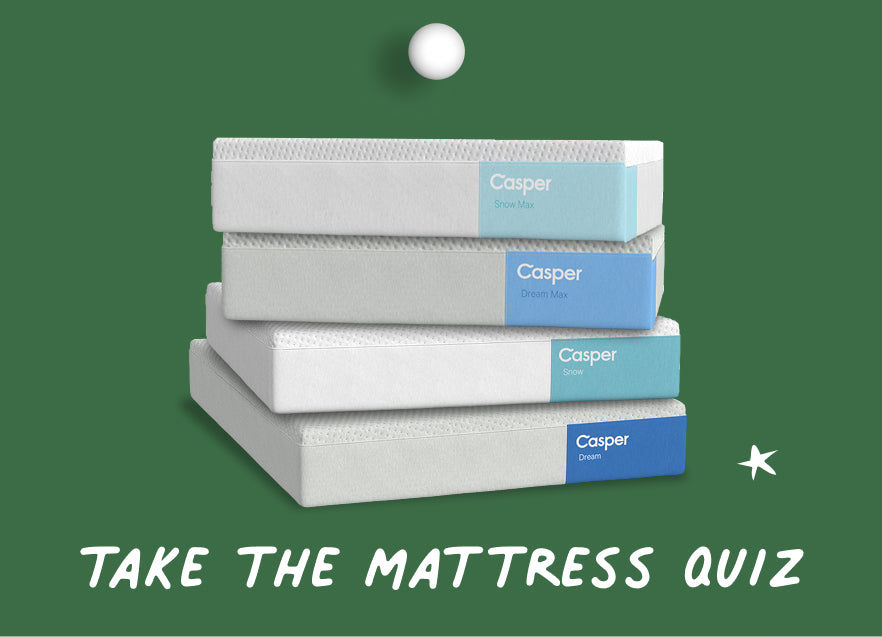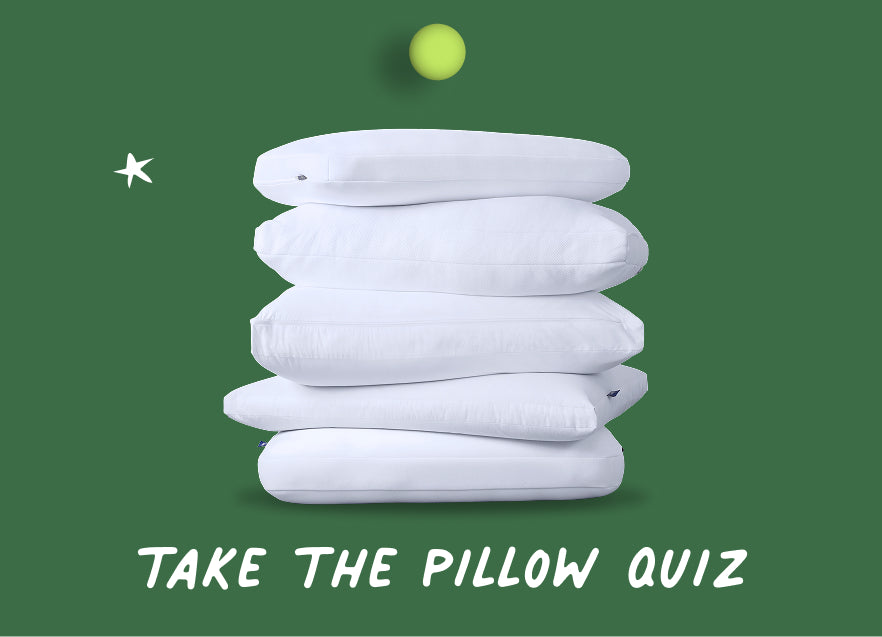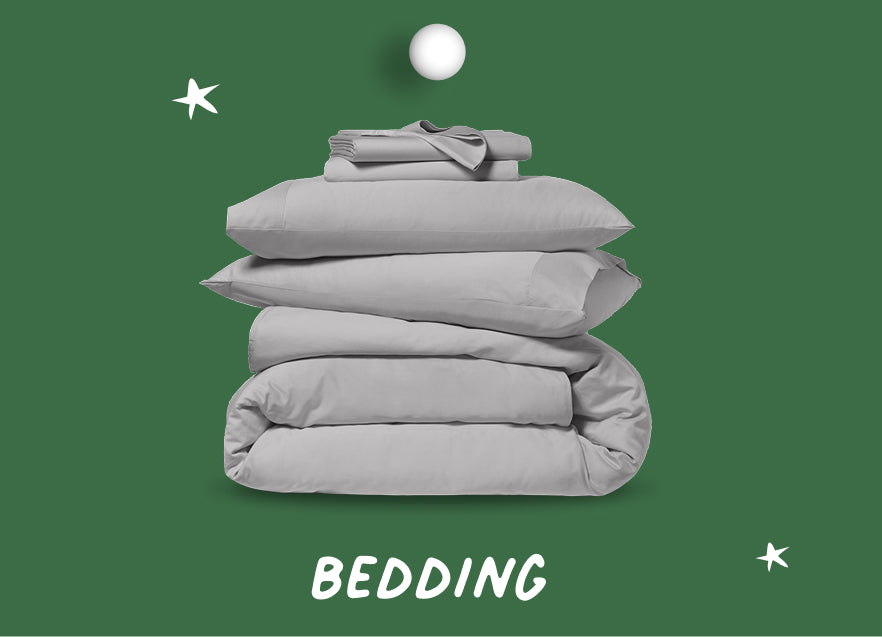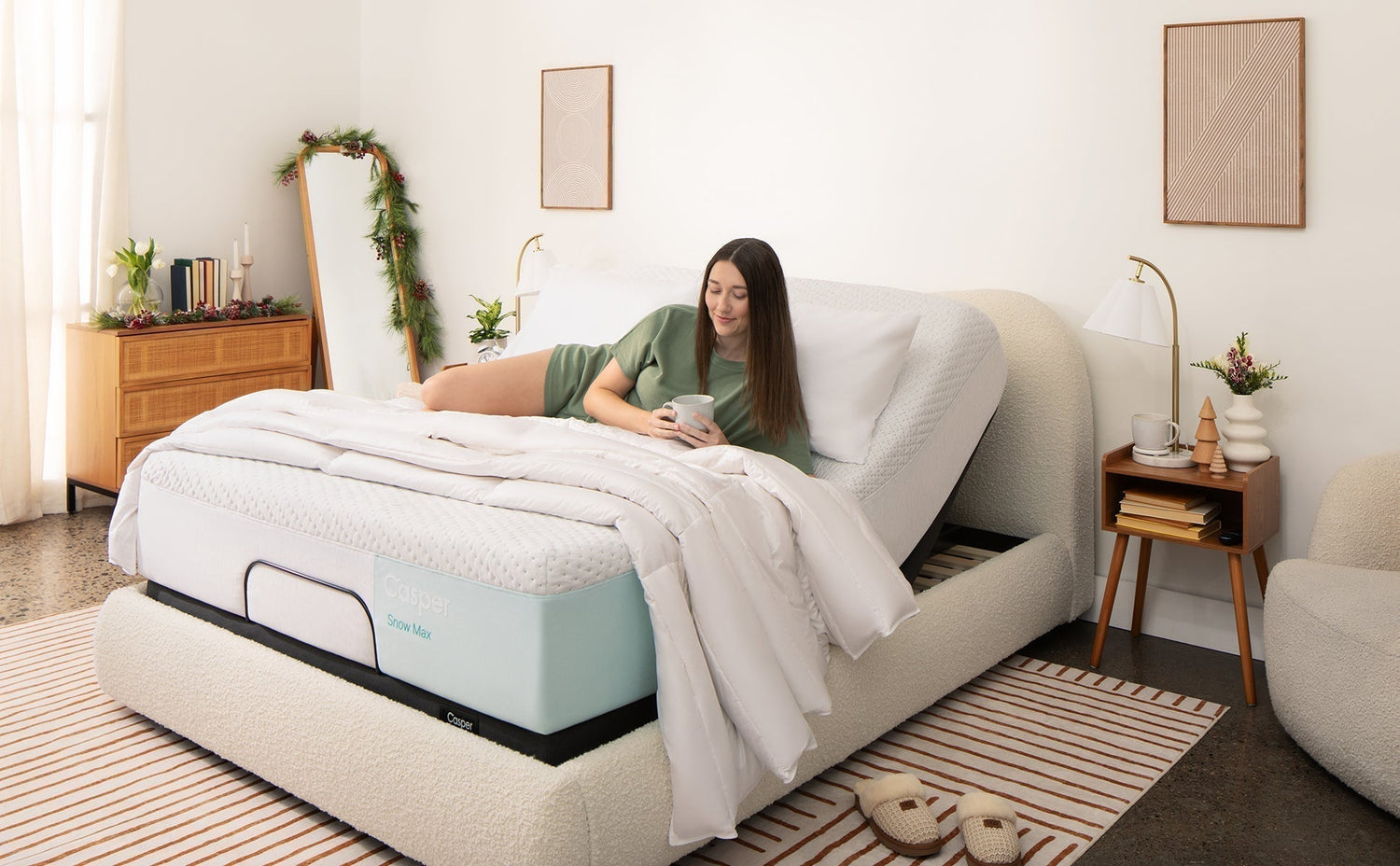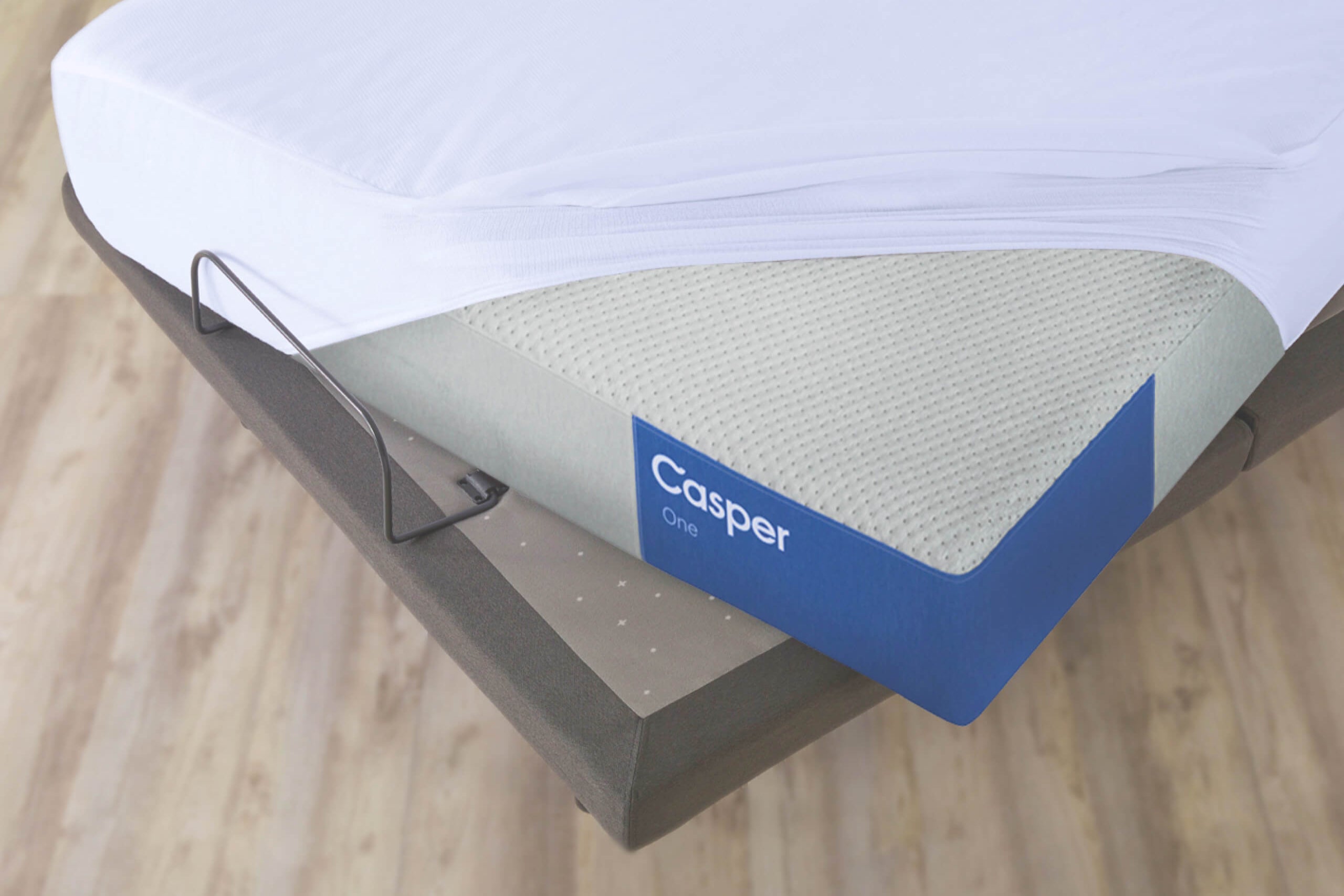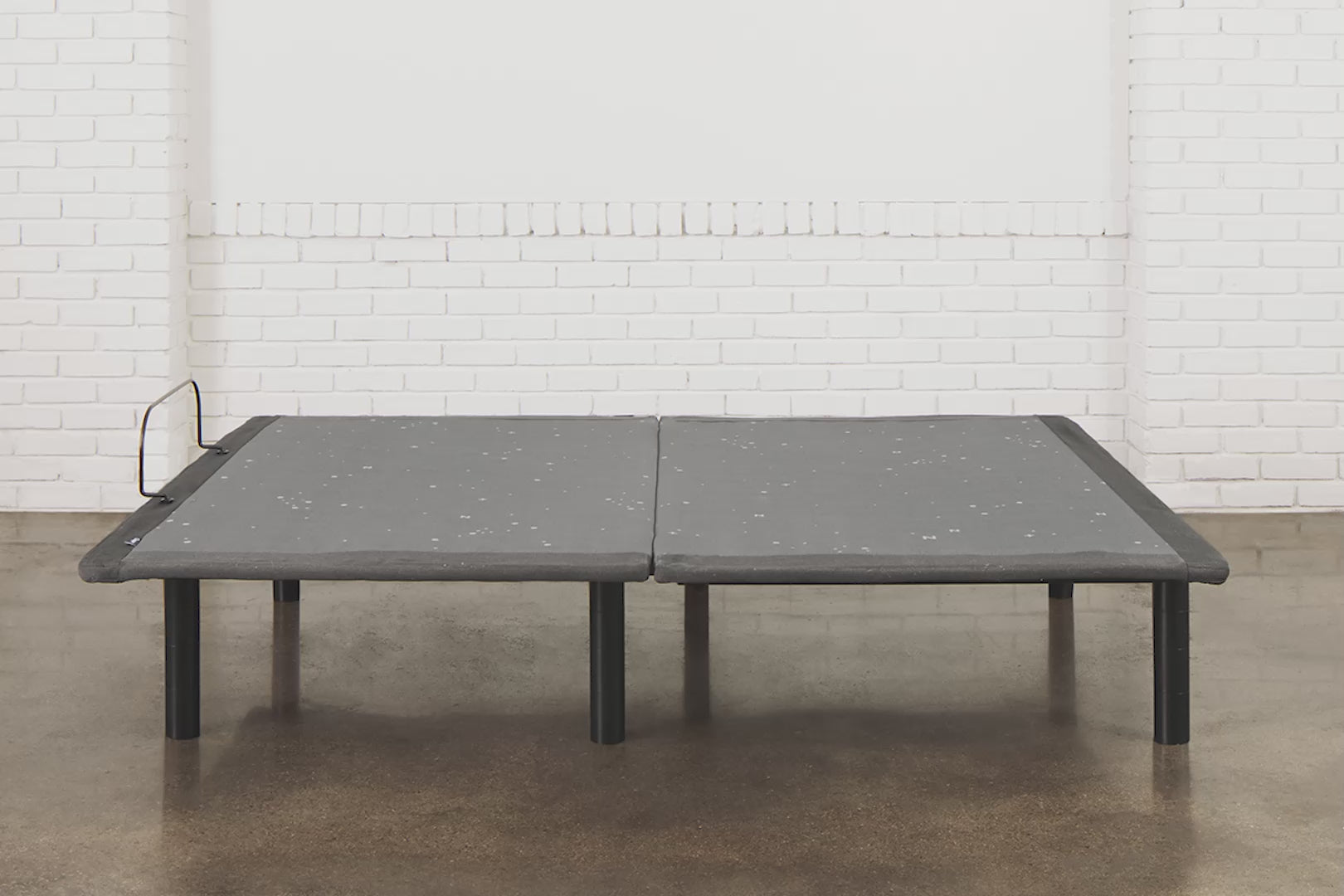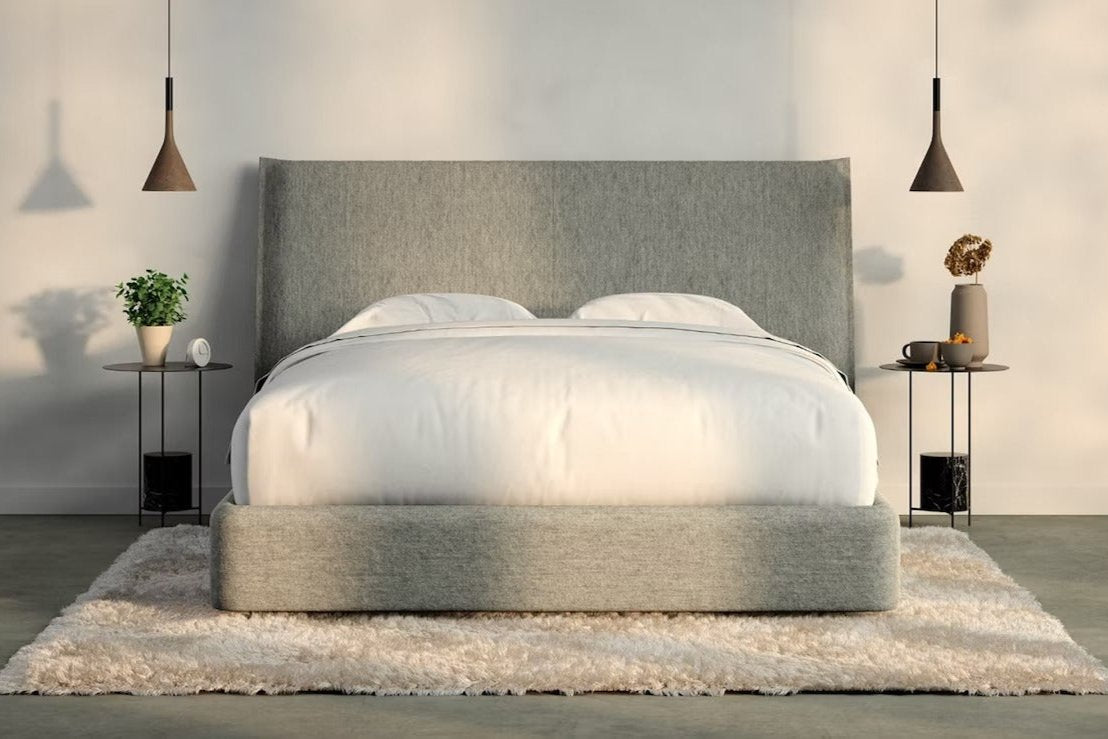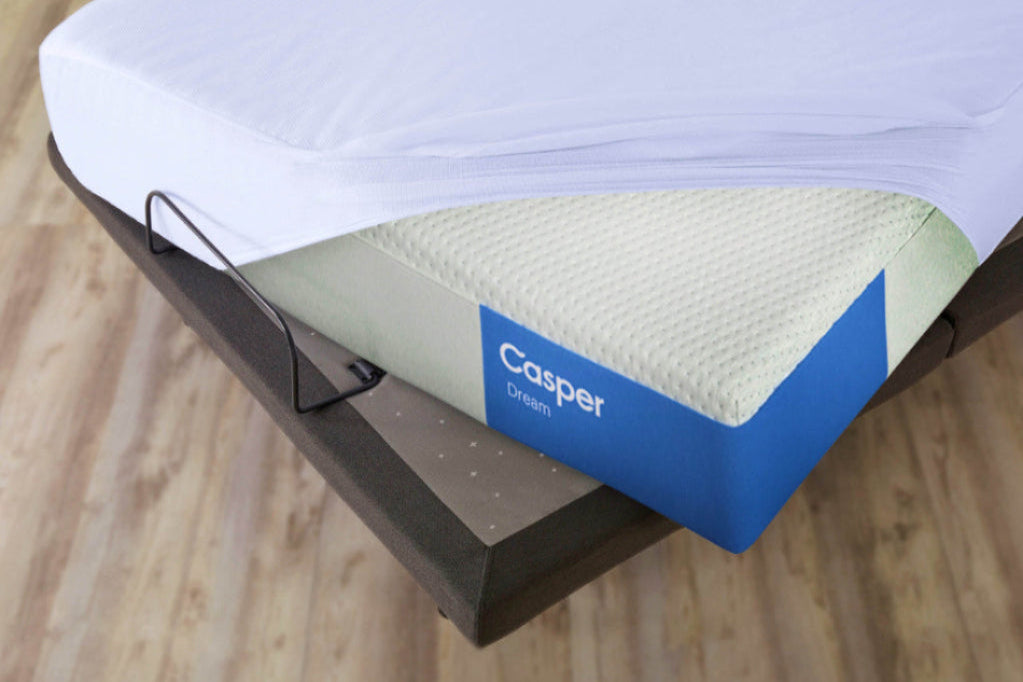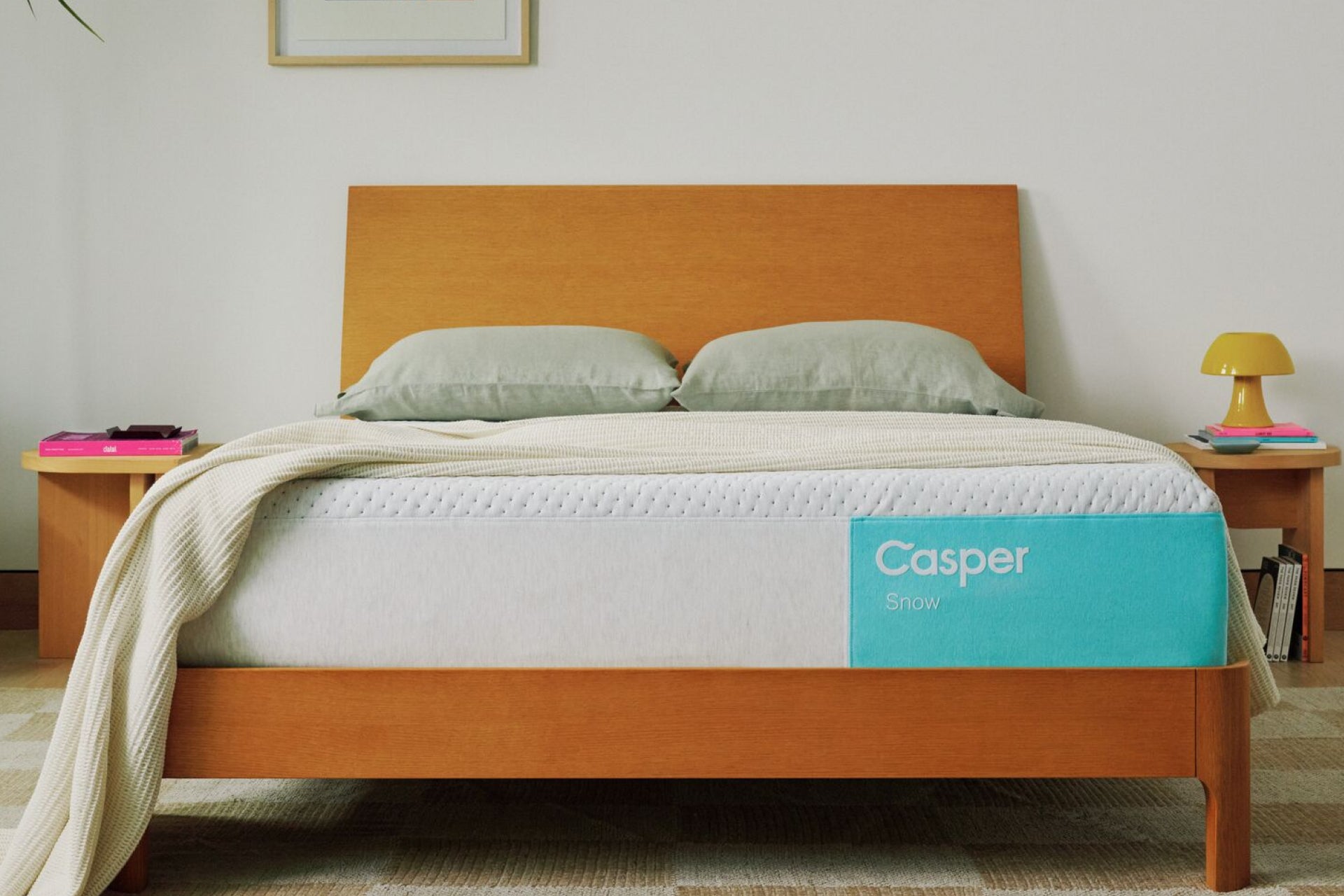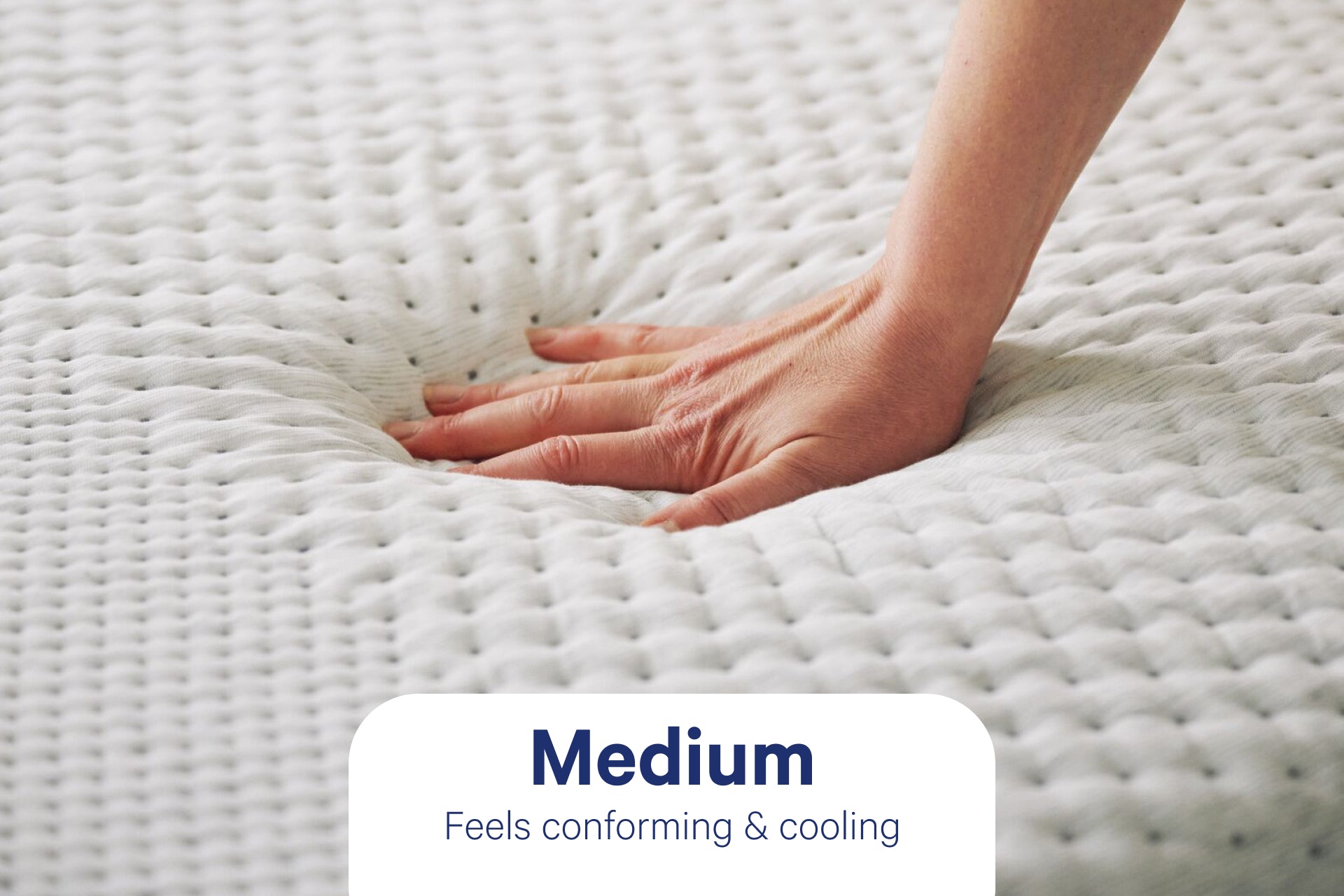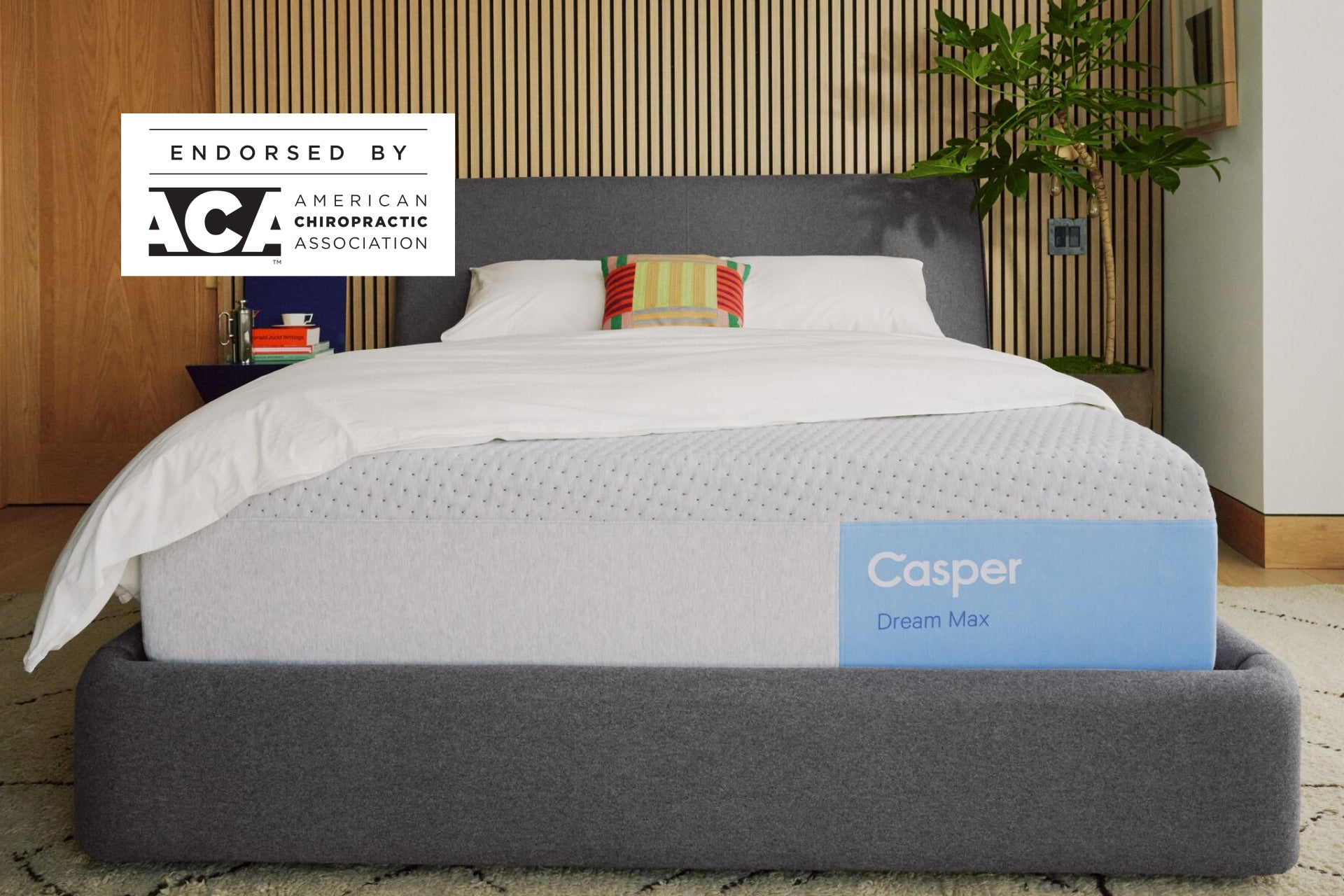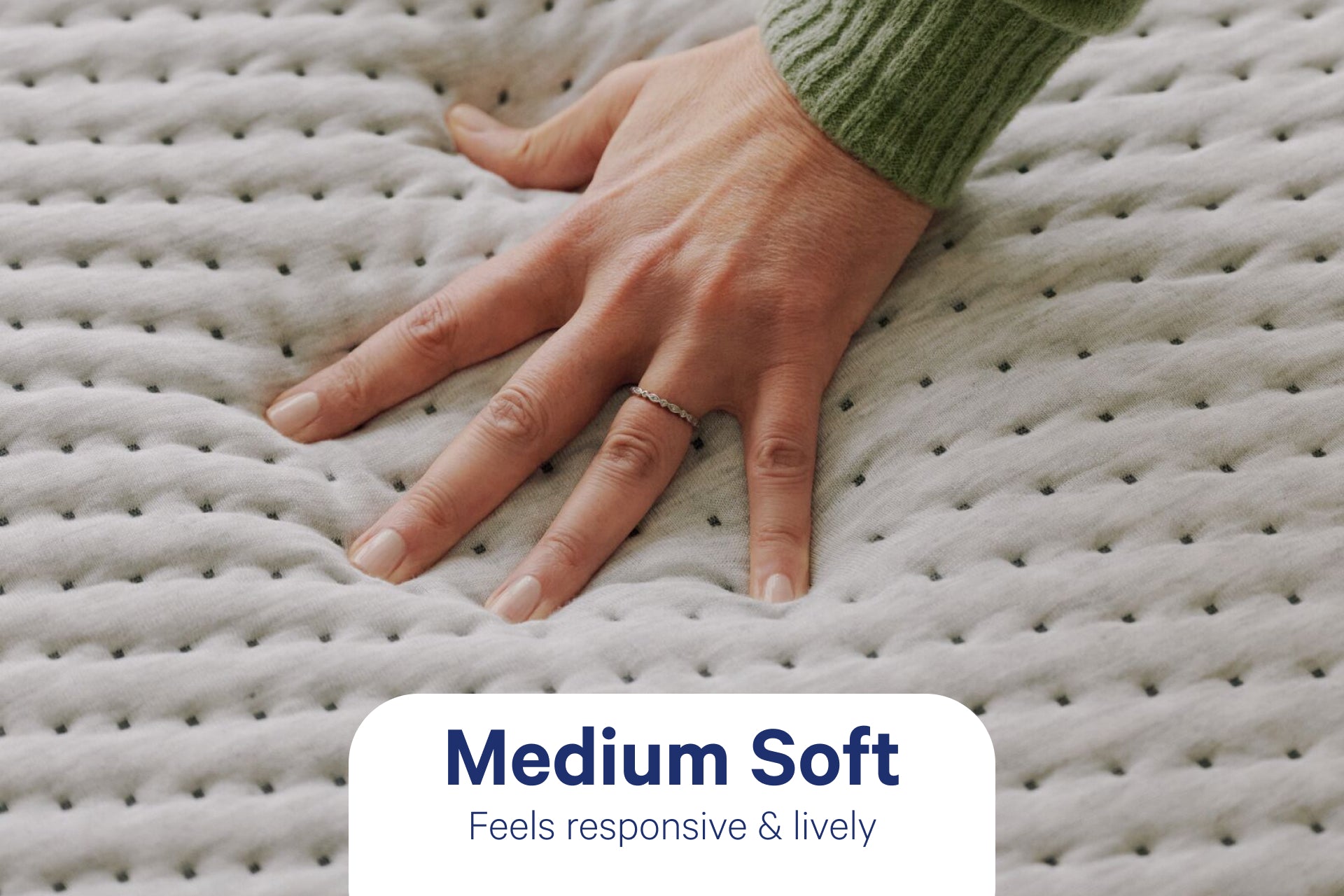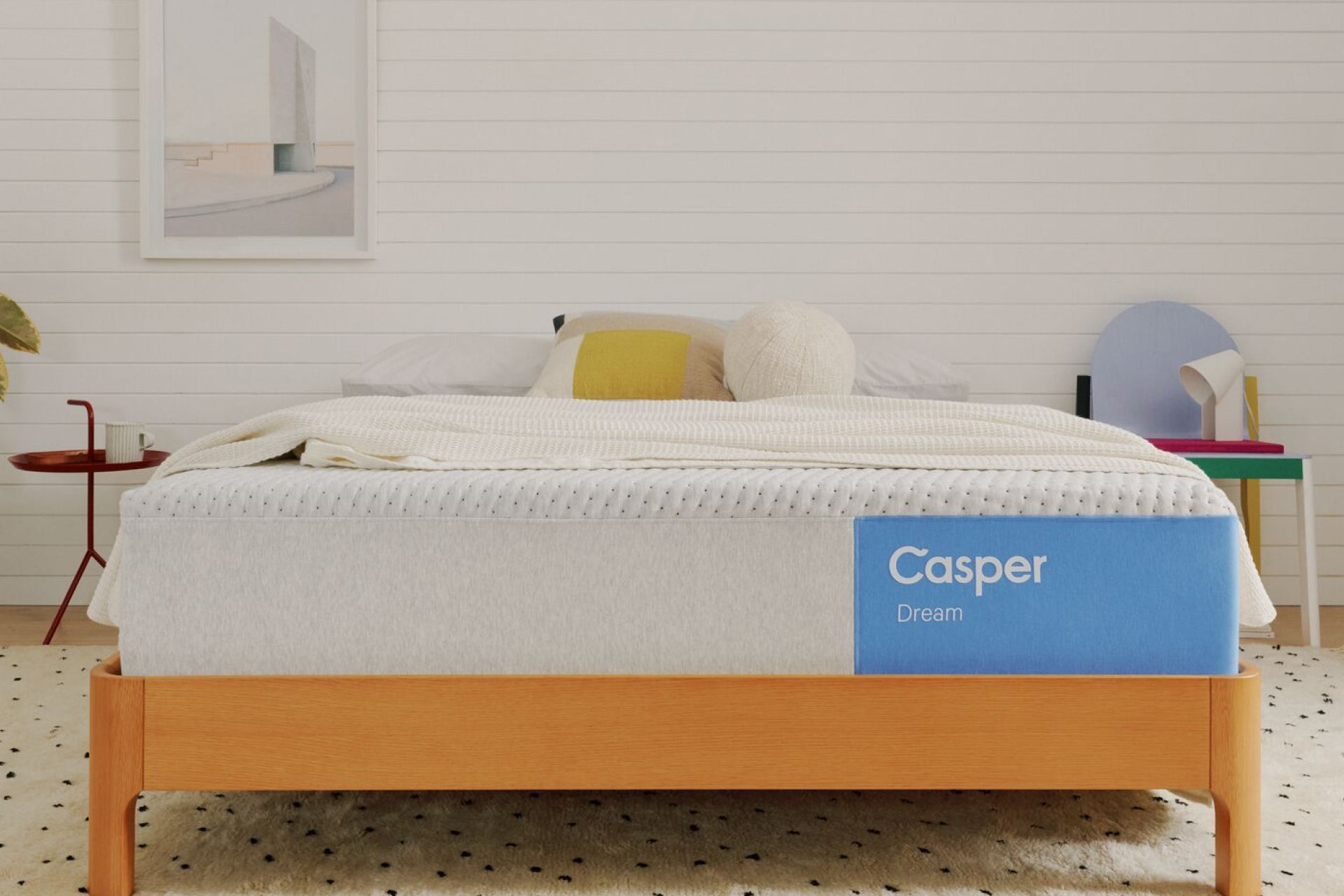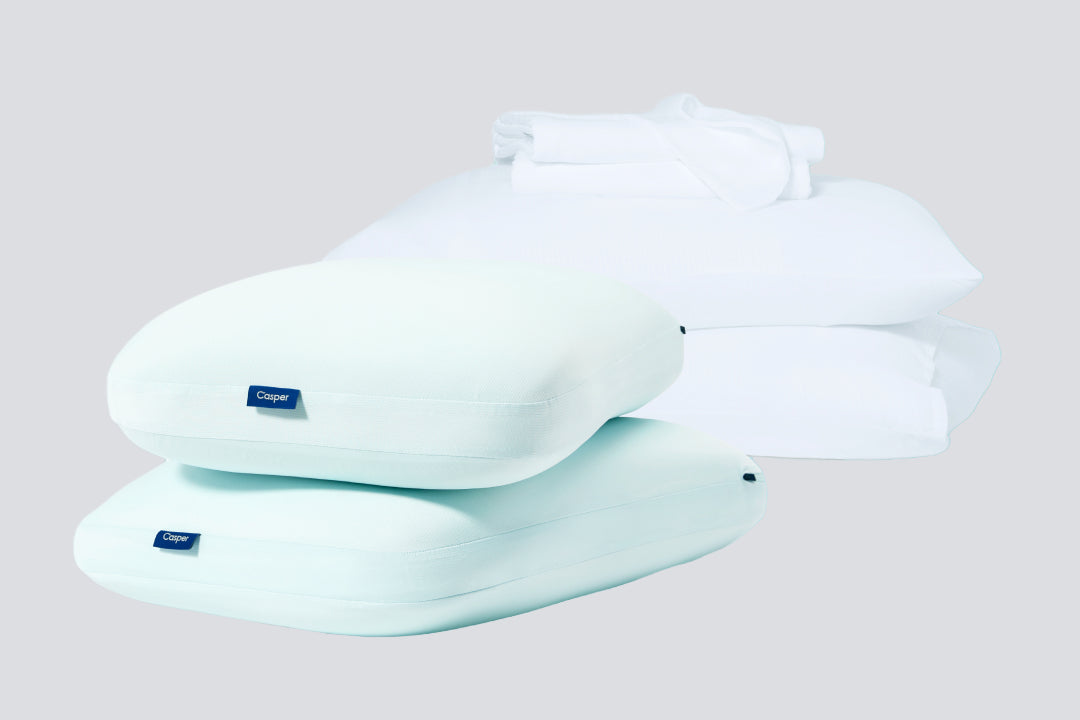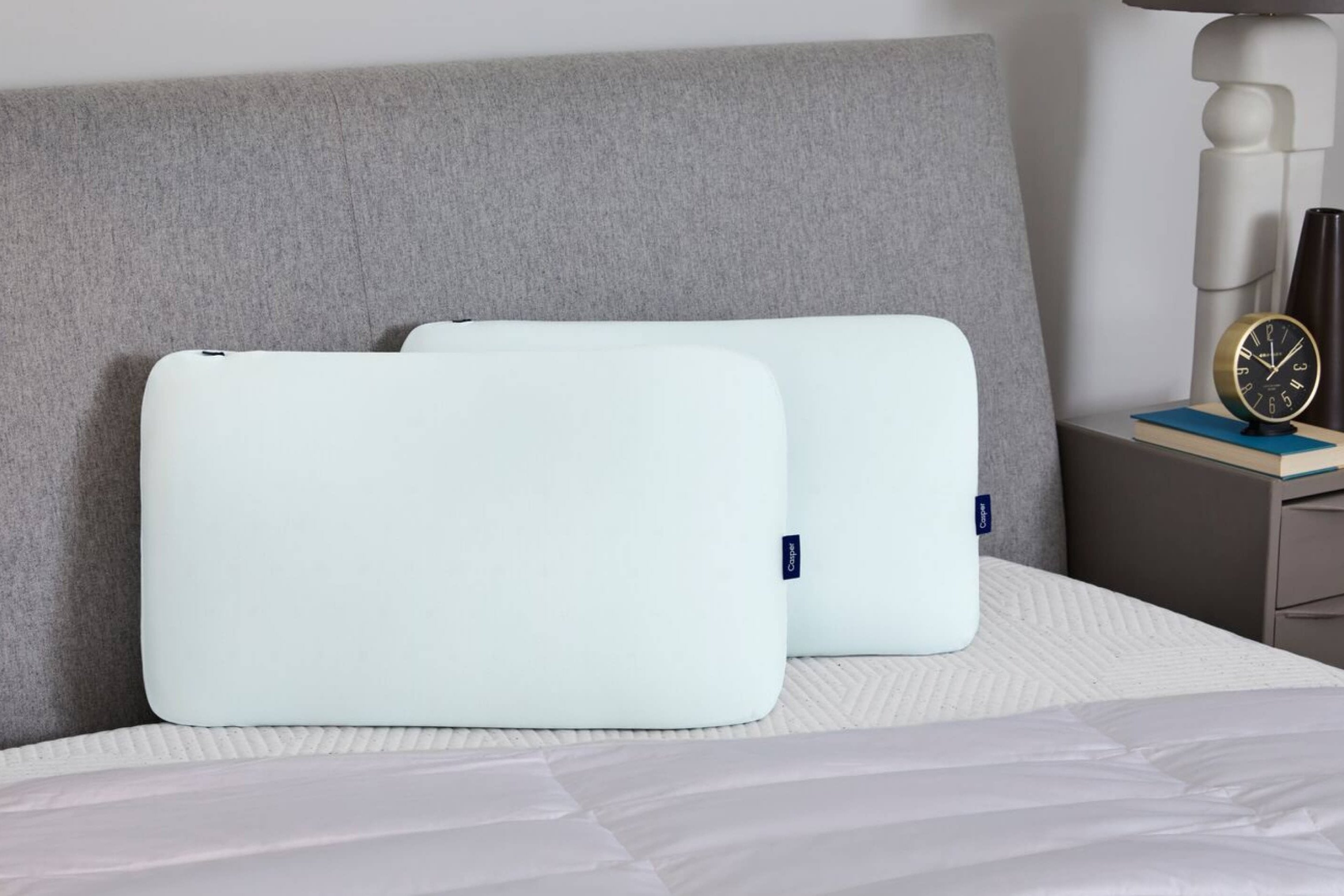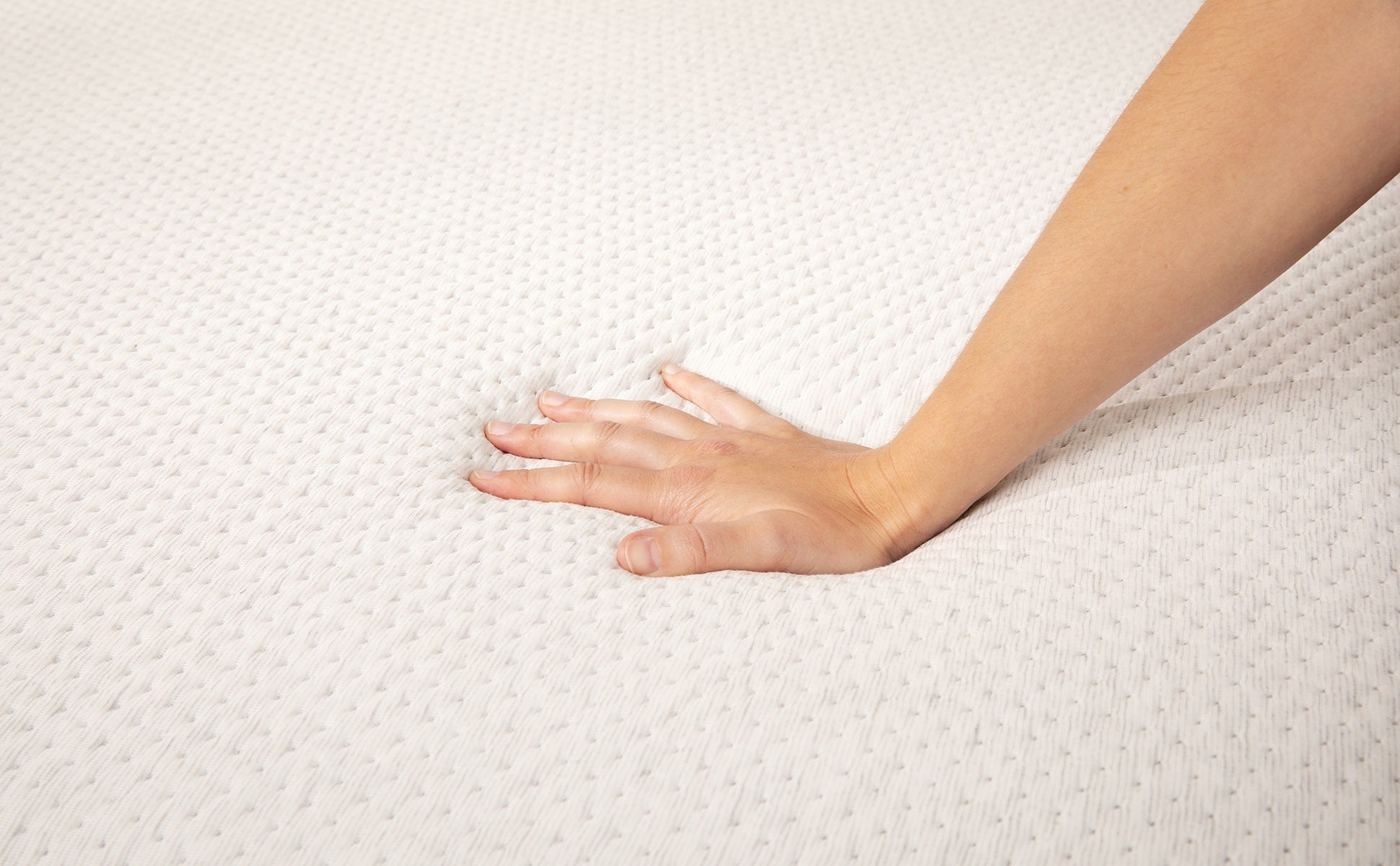An adjustable bed frame can affect the integrity and lifespan of an incompatible mattress. On the other hand, the wrong mattress can either not work properly or prematurely wear out an adjustable base.
Adjustable bed frames are becoming more popular—and for good reason. They can be a worthwhile investment for those wanting to elevate their comfort, get more supportive sleep, doze for longer, and find solutions for issues like sleep apnea or chronic back pain.1,2
But not all mattresses can or should be paired with this type of bed base, leaving many to wonder, Do adjustable bed frames ruin mattresses? Not when you choose a compatible mattress, but problems can pop up when the wrong mattress (like one that's too rigid, thick, or heavy) is placed on an adjustable frame. Here's what to know.
The Mattress Compatibility Factor
The most important thing when buying a mattress for an adjustable bed is that the two are compatible. An incompatible model will often have rigid springs, continuous coils, or stiff border wires that aren't meant to bend. Or it might be too thick, which can make it harder for the mattress to have the right flexibility to move into different angles and recline positions.
To avoid a mismatch, look for mattresses specifically labeled as adjustable base-friendly—even better if they're designed explicitly for adjustable beds. You might consider buying the mattress and adjustable frame together as a set. If you're unsure, check with the manufacturer.
Learn more in our blog, Do You Need a Special Mattress for an Adjustable Bed?
Mattress Thickness Guidelines
A mattress used with an adjustable bed frame should generally be no thicker than 14 inches. Anything taller than that might resist bending or be so heavy that it strains the base. At least 8 inches is also ideal, as a thinner mattress thickness can lack support and have a lower weight capacity.3
Construction Features to Look For
A mattress that is compatible with an adjustable base will be able to bend and flex with the bed's hinges without permanently creasing or breaking. All-foam mattresses can work well, along with certain hybrid mattresses that combine foam with flexible pocketed coils.

3 Best Mattress Types for Using an Adjustable Base
The best types of mattresses for adjustable bases are memory foam, latex, and hybrid because they move with the base and retain their shape without damage.4
1. Memory Foam Mattresses
Memory foam is known for being moldable, contouring in response to weight or movement. Then when the force is removed, it quickly goes back to its original shape.
2. Latex Mattresses
Latex is similar to foam in some ways, but the natural material is a bit bouncier and doesn't have the body-conforming effect of memory foam. Still, latex's buoyant quality and inherent durability allow it to bend without cracking and then easily spring back into shape.
3. Hybrid Mattresses (with Pocket Coils)
The right hybrid mattress can pair well with an adjustable bed base. If you go with a hybrid, choose a model with comfort foam layers and individually wrapped coils (rather than traditional springs), like one from Casper.
Mattress to Avoid with an Adjustable Bed
What mattresses don't work with adjustable beds? Designs that resist flexing or stress the base, such as:
- Traditional innerspring – A traditional innerspring mattress with large, continuous metal coils and rigid border wires isn't meant to be repeatedly bent. Folding it into different angles could ruin the mattress and defeat the purpose of an adjustable bed.
- Overly thick or heavy models – As mentioned, a mattress that's too heavy could stress an adjustable base, overworking the motors or lifting mechanics. And one that's too thick may not bend with the adjustable bed properly.
Mattress compatibility is key, so if your current mattress is incompatible and you'd like to reap the benefits of an adjustable bed frame, it may be time to consider choosing a new mattress.
What Can Go Wrong with an Incompatible Mattress
Here's what can happen if you use the wrong mattress with an adjustable bed frame:
- Accelerated wear and structural damage – An extra-thick pillowtop mattress (over 14 inches in height) with very firm edge support and multiple layers of coils could become damaged if it's repeatedly bent.
- Comfort and support loss – Beyond prematurely breaking down the materials, using an incompatible mattress could cause structural issues affecting the mattress's support. This might mean it lacks pressure relief, doesn't have its original zoned support, or has an uneven, lumpy feel.5
- Strain on base motors – When a mattress is too heavy, it can strain the hinges of the base, force the actuators to work harder, or overwhelm the motors.
- Warranty trouble – Using the wrong mattress with an adjustable base could void the warranty of the mattress or base, as either one could damage the other.
Mattress Lifespan on Adjustable Beds
A high-quality mattress can last up to a decade. The daily bending and reclining of an adjustable base could shorten its lifespan. But with a compatible model, the effect should be fairly minimal—you're still looking at seven to 10 years.
Be sure to check the warranty for both your mattress and adjustable bed frame to see what could void it. Also, if it has a lifetime guarantee, clarify what's considered "the life of the product," as this often means the typical lifespan of the product, not your lifetime.

Casper's Adjustable Bed Frames and Compatible Mattresses
Casper offers three adjustable bases with zero-gravity muscle relief, smooth articulation, and easy controls. They're compatible with all mattresses from our collection, giving you plenty of options to choose from without worrying about damage or premature wear and tear. Our adjustable beds also work with split kings (two twin XL mattresses together), a perfect sleep solution for couples with differing sleep preferences.
Whether you're considering an adjustable base for your existing mattress or exploring options for a new mattress, shop Casper for the best compatibility and comfort.
When you shop our collections, you'll also find pillows for every sleeping style, bed sheets, and accessories for creating your most restful sleeping environment.
Sources:
- Grand View Research. U.S. Adjustable Bed Frames Market Size, Share & Trends Analysis Report By Frame Type (Single Frame, Split Frame), By Size (Full Size, King Size, Queen Size), By End Use, By Distribution Channel, And Segment Forecasts, 2025 - 2033. https://www.grandviewresearch.com/industry-analysis/us-adjustable-bed-frames-market-report
- Sleep. 0344 Use of an Adjustable Bed Base Improves Sleep Quality and Duration. https://academic.oup.com/sleep/article/45/Supplement_1/A154/6592556
- PeerJ. Sleeping mattress determinants and evaluation: a biomechanical review and critique. https://pmc.ncbi.nlm.nih.gov/articles/PMC6348954/
- Applied Sciences. Investigating the Impact of Long-Term Use on Mattress Firmness and Sleep Quality—Preliminary Results. https://www.mdpi.com/2076-3417/14/21/10016
- Sleep Science. Effects of an adapted mattress in musculoskeletal pain and sleep quality in institutionalized elders. https://pmc.ncbi.nlm.nih.gov/articles/PMC4688575/
- Journal of the Canadian Chiropractic Association. Before-after study to determine the effectiveness of an adjustable wood frame-foam and wool mattress bed-system in reducing chronic back pain in adults. https://pmc.ncbi.nlm.nih.gov/articles/PMC2485300/

